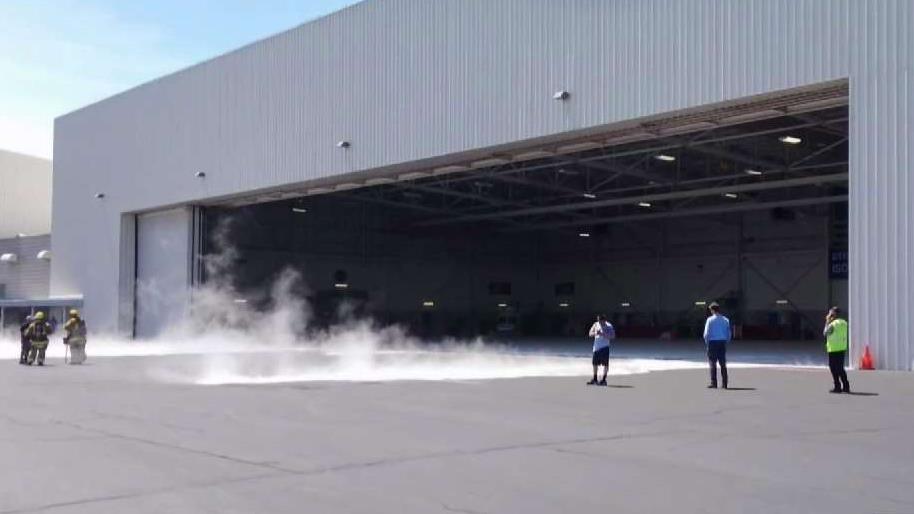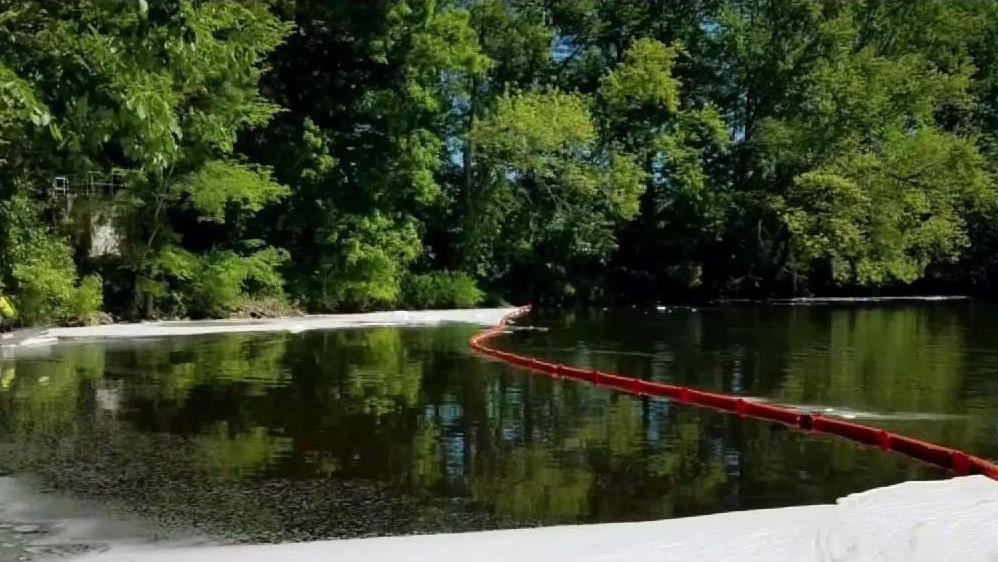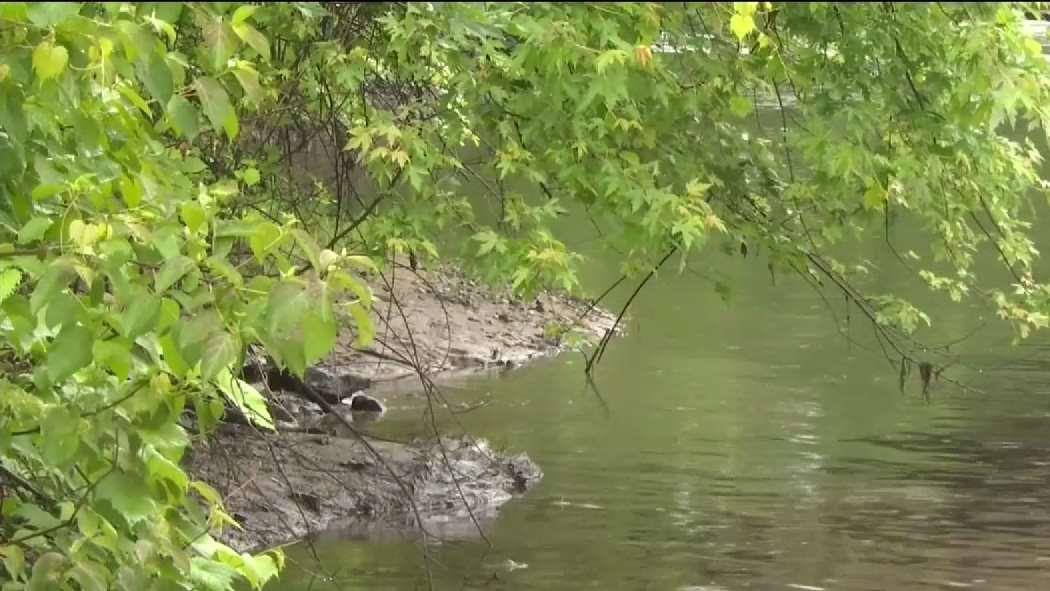Preliminary testing results detected elevated levels of PFAS chemicals in fish from the Farmington River after firefighting foam spilled into the river from Bradley International Airport in June.
According to the Department of Energy and Environmental Protection, the preliminary results, which are unvalidated, showed elevated levels of the potentially dangerous chemicals in the tissue of the fish. A third-party laboratory is in the process of validating the results of the tests. DEEP expects to receive those results as early as next week.
On June 8, 50,000 gallons of firefighting foam, which contains PFAS, was accidentally released from the Signature Flight hanger at Bradley International Airport.
The foam went into the hanger’s drains and traveled to the nearby Metropolitan District Water Pollution Control Facility, eventually dumping out into the Farmington River.
Public health officials issued an advisory after the spill warning area residents not to eat any fish caught in the river until the impact of the spill was investigated. That advisory remains in effect months later.
PFAS is a group of thousands of man-made chemicals that are widely used in consumer products, including products ranging from nonstick cookware to waterproof clothing to carpets to food packaging materials. According to DEEP and the state Department of Public Health, PFAS have been linked to health risks ranging from developmental effects in fetuses and infants to certain forms of cancer.
Gov. Ned Lamont has appointed a state PFAS task force create a plan of action to address PFAS and its health risks across the state. The plan makes multiple recommendations, including to test drinking water for PFAS, to reduce or prevent future releases of PFAS-containing firefighting foam to the environment, and to identify assess and clean up historical releases of PFAS to the environment. View the Draft PFAS Action Plan here.
.instrux { font-family: Verdana; font-size: 10px; } .container { position: relative; width: 100%; } .image { display: block; width: 100%; height: auto; } .overlay { position: absolute; top: 0; bottom: 0; left: 0; right: 0; height: 100%; width: 100%; opacity: 0; transition: 1s ease; background-color: #008CBA; } .container:hover .overlay { opacity: .8; } .text { color: black; font-size: 15px; position: absolute; top: 50%; left: 50%; transform: translate(-50%, -50%); -ms-transform: translate(-50%, -50%); text-align: center; } h2 { color: black; font-size: 15px; text-align: center; } nav ul li { width: 50%; /* from above */ float: left; list-style: none; margin: 0; padding: 0; }
Click each image for more information

Connecticut Airport Authority Discusses Replacing PFAS Foam

DEEP Suggests Testing Some Wells for PFAS

Tests Show Elevated PFAS Levels in Farmington River Fish

DeLauro Calls for Ban on Food Packages With PFAS

Test Results Show PFAS in Fish Caught in Farmington River

State Monitors Farmington River for Firefighting Foam After B-17 Crash

What’s in the Water? The Dangers of PFAS

Preliminary Test Results Show PFAS Chemicals in Fish From Farmington River

Windsor Issues Health Advisory After B-17 Plane Crash at Bradley

Navy Seeking to Test Private Wells Near Groton Submarine Base

3 More CT Rivers to be Tested for PFAS

CT Airports Look at Ways to Contain PFAS Firefighting Foam

Cancer-Linked Forever Chemicals Found in Consumer Products

Lamont Creates Task Force to Study PFAS Chemical

Photos: Investigation into Firefighting Foam Spill at Bradley Continues



